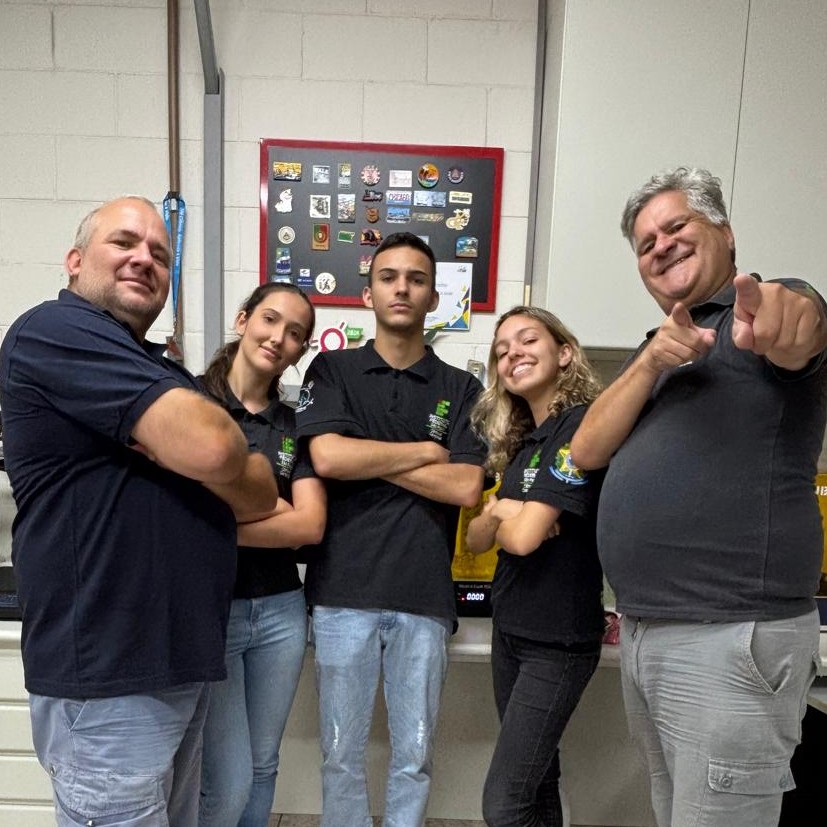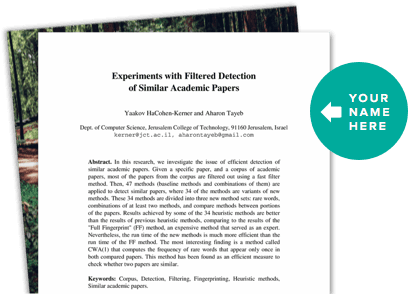About This Project
Hygroelectricity is a promising energy source based on charge separation from water molecules. Building on recent research, we study materials and geometries for hygroelectric cells to generate DC power. Our latest challenge is developing cells to power nautical signaling using seawater. With your support, we seek to apply hygroelectricity’s principles to create clean, sustainable ocean energy solutions.
Ask the Scientists
Join The DiscussionWhat is the context of this research?
Hygroelectricity is an emerging field that explores how charge separation in water molecules enables energy generation from humidity. Recent research shows that electrified water interfaces can produce electricity, hydrogen, and hydrogen peroxide at room temperature. Inspired by these findings, we aim to develop hygroelectric cells powered by seawater for nautical signaling in remote areas. This technology could provide sustainable energy for navigation aids, monitoring buoys, and offshore communication. By optimizing materials and geometries, we seek to turn hygroelectricity into a practical energy solution for ocean-based industries and coastal communities. With your support, we can advance clean, renewable energy and pioneer new ways to harness water’s power.
What is the significance of this project?
Hygroelectric technology presents a viable alternative to solar and wind energy generation and can also function as a complementary power source. By capturing energy from ambient humidity, it provides a sustainable solution in environments where conventional renewables are less effective.
This innovative approach supports United Nations Sustainable Development Goal 7 (SDG 7) by advancing clean and accessible energy solutions. Its potential is particularly strong in marine environments, where energy generation from seawater could power both surface and submerged devices. Unlike solar energy, which is ineffective underwater, hygroelectricity offers a continuous and reliable power source for nautical signaling, autonomous ocean monitoring systems, and underwater communication devices.
Our research focuses on optimizing hygroelectric cells to enhance energy production from seawater, making it a viable and sustainable solution for powering marine-based technologies.
What are the goals of the project?
The goal of this project is to develop a nautical signaling system powered by hygroelectric energy, ensuring continuous operation in marine environments. Using seawater as an energy source, this technology can power surface and submerged devices, where solar energy is ineffective.
We will develop and test hygroelectric cells to assess feasibility, efficiency, and durability. Our research includes:
1) Material Optimization – Testing conductive materials and cell geometry to enhance charge separation in saltwater.
2) Lab Performance – Simulating salinity, temperature, and water flow, collecting real-time data with a custom datalogger.
3) Field Testing – Evaluating hygroelectric cells in a marine environment.
4) Comparative Testing – Benchmarking against solar power as an alternative or complementary system.
This project aims to provide a sustainable energy alternative for offshore navigation, marine monitoring, and underwater communication.
Budget
Our challenge is designing a robust nautical signaling device that can be handled without failures and have long-lasting durability.
Endorsed by
 Project Timeline
Project Timeline
We estimate a one-year timeline for this project, focusing on cell development, laboratory experiments, and field testing to ensure optimal performance and reliability in real-world conditions.
Feb 13, 2025
Project Launched
Apr 30, 2025
New models of hygroelectric cells will be designed and built.
Jul 31, 2025
Performance and robustness assessment of the cells in the laboratory.
Sep 30, 2025
Field testing of the cell in a marine environment.
Mar 31, 2026
Comparison of performance with systems powered exclusively by solar energy and with hybrid systems combining solar energy and hygroelectricity.
Meet the Team
Team Bio
The SafeSpot Project brings together a diverse and talented team committed to developing innovative signaling solutions for remote environments. Combining expertise in science, engineering, and emerging technologies, the team is dedicated to advancing hygroelectricity as a sustainable energy source.
Team HygroEnergy
Principal Investigator (PI)
Eduardo Galembeck – Full Professor at the State University of Campinas (UNICAMP). Together with Prof. Edson Duarte, he leads a team of brilliant high school students in applying cutting-edge research to develop signaling devices for remote areas, drawing from the latest advancements in hygroelectricity.
Scientist
Edson Duarte – Electrical Engineer and Professor at the Federal Institute of São Paulo (IFSP), Campinas Campus. He is recognized for his dedication to mentoring high school students, guiding them through hands-on projects that significantly contribute to their technical skills and academic growth. His expertise in electronics and applied engineering plays a key role in the SafeSpot project.
Budding Scientists
Vinícius Pavanello Secafim – Former Electronics student at IFSP Campinas and Junior Scientific Initiation scholarship holder. In the SafeSpot Project, he focuses on the development of electronic circuits and system integration, ensuring the efficiency and reliability of signaling devices designed for remote environments.
Giovana Rocha dos Santos – Electronics student at IFSP Campinas, Junior Scientific Initiation scholarship holder, and award winner at the Samsung Innovation Campus 2023. She leads the development of hygroelectric cells, researching their functionality, materials, and geometry, while also conducting simulations for optimization. Her goal is to enhance energy harvesting in remote environments by combining science and sustainability.
Isadora Alves dos Santos – Electronics student at IFSP Campinas. In the SafeSpot Project, she specializes in embedded systems and firmware development, working on optimizing the microcontroller programming and energy management strategies to ensure long-lasting and efficient operation of the signaling devices.
Additional Information
We have already conducted preliminary tests in outdoor and aquatic environments, demonstrating the feasibility of the project. However, further development is needed to enhance the efficiency and durability of the hygroelectric cells. To achieve this, we rely on funding to manufacture, test, and optimize the cells, ensuring they become more robust and suitable for real-world applications.
Reference Articles:
Self-Electrified Water is a Powerful Toolbox for the Production of Chemicals and Energy F. Galembeck, L.P. Santos, T.A.L. Burgo, A. Galembeck - Journal of the Brazilian Chemical Society, 2024, 35 (11).
The Emerging Chemistry of Self-Electrified Water Interfaces F. Galembeck, L.P. Santos, T.A.L. Burgo, A. Galembeck - Chemical Society Reviews, 2024, 53, 2578-2602.
Water Reactivity in Electrified Interfaces: The Simultaneous Production of Electricity, Hydrogen, and Hydrogen Peroxide at Room Temperature L.P. Santos, D. Lermen, R.G. Yoshimura, B.L. Da Silva, A. Galembeck, T.A.L. Burgo, F. Galembeck - Langmuir, 2023, 39 (16), 5840–5850.
Project Backers
- 1Backers
- 1%Funded
- $5Total Donations
- $5.00Average Donation


